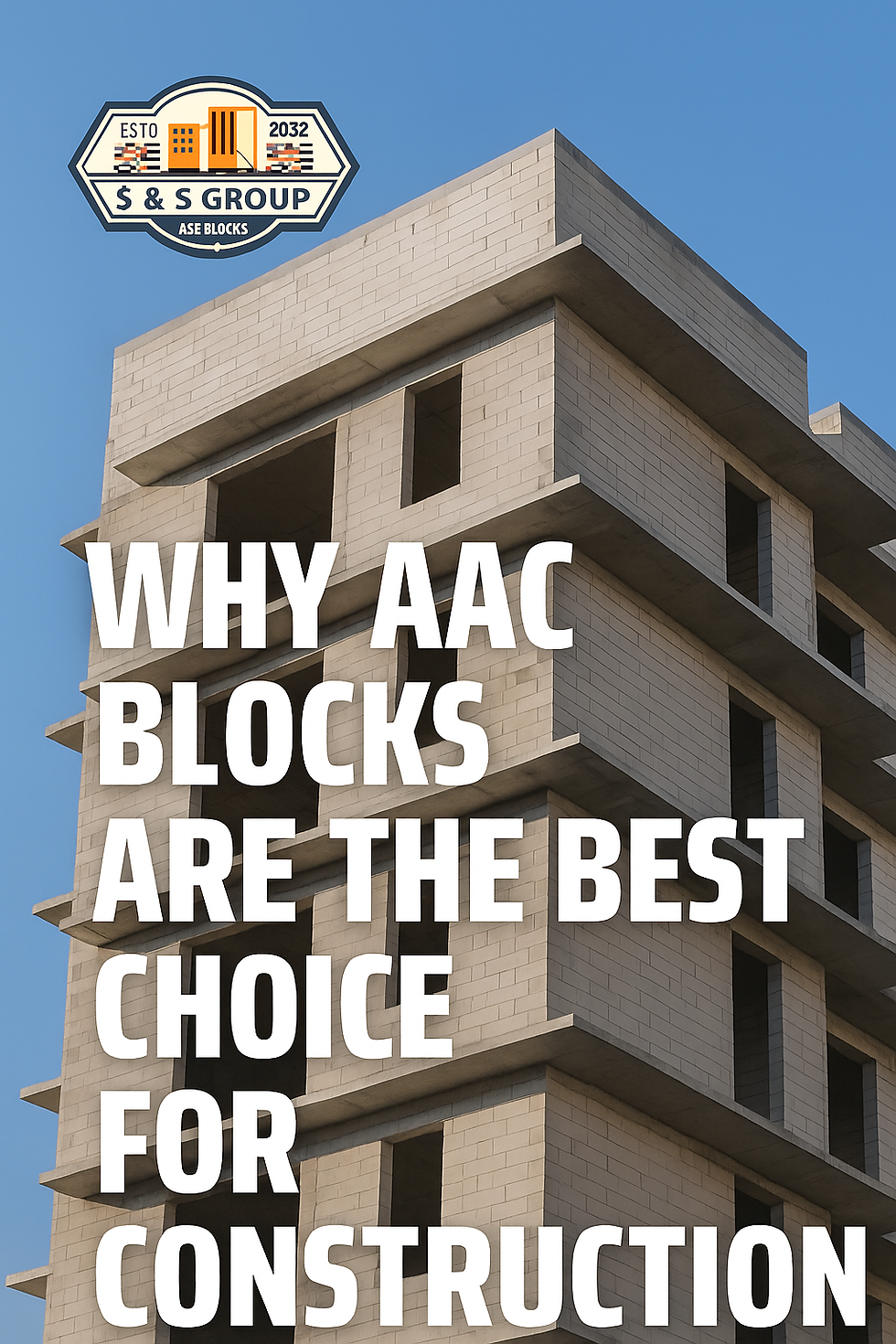Modern AAC Block Construction
- PRASHANT KUMAR MASIH

- Aug 27
- 2 min read
Updated: Oct 26
Modern AAC Block Construction: A Sustainable Choice for Builders

1. What are AAC Blocks?
Autoclaved Aerated Concrete (AAC) blocks are lightweight, precast building materials. They consist of cement, lime, sand, water, and a small amount of aerating agent. These blocks are known for their excellent thermal insulation, fire resistance, and ease of handling. Because of these properties, AAC blocks are widely used in modern construction. They serve as a sustainable alternative to conventional bricks.
2. Key Advantages of AAC Construction
AAC blocks offer numerous benefits:
Lightweight: This feature reduces the dead load on structures and lowers transportation costs.
Thermal Insulation: AAC blocks help maintain comfortable indoor temperatures. They keep spaces cooler in summer and warmer in winter.
Fire Resistant: These blocks can withstand extremely high temperatures, enhancing building safety.
Eco-Friendly: AAC blocks are manufactured with less energy. They use industrial by-products and produce minimal waste.
Dimensional Accuracy: Factory-made blocks ensure uniformity, precision, and smooth finishes.
3. Construction Process with AAC Blocks
a) Site Preparation
First, level the site and construct the foundation according to design requirements. Proper preparation sets the stage for a successful build.
b) Block Laying
Use thin-bed mortar adhesive instead of traditional thick mortar. Lay the first course with utmost precision for a perfectly level base. Stagger vertical joints in subsequent layers to enhance wall strength.
c) Reinforcement
Incorporate horizontal and vertical reinforcement in load-bearing areas as per structural design. Place steel bars in grooves cut into the blocks and fill them with grout.
d) Openings
Install lintels (precast or cast-in-situ) above doors and windows. This step is crucial for ensuring structural integrity.
e) Finishing
Apply a thin layer of plaster or putty for a smooth, durable finish. AAC’s uniform surface requires minimal plaster compared to clay bricks, saving time and resources.
4. Best Practices for Modern AAC Construction
To ensure the best results, follow these best practices:
Use Proper Tools: Utilize rubber mallets, notched trowels, and AAC cutters for precision.
Minimal Curing: AAC blocks require significantly less water compared to conventional brickwork.
Easy MEP Installations: The soft texture allows for quick chasing for electrical and plumbing conduits.
Quality Checks: Inspect blocks for cracks, uniformity, and moisture content before use.
5. Design Possibilities with AAC Blocks
AAC blocks open up a world of design possibilities:
Energy-Efficient Homes: Integrate AAC walls with large glazed openings and passive solar architecture for optimal energy efficiency.
High-Rise & Low-Rise Buildings: These strong yet lightweight blocks are suitable for both residential and commercial projects.
Contemporary Interiors & Exteriors: Exposed AAC walls provide a sleek, industrial-modern aesthetic that appeals to many.
6. Conclusion: The Future of Construction with AAC Blocks
✅ AAC block construction combines speed, strength, sustainability, and style. This makes it the preferred choice for modern architects and builders. By choosing AAC blocks, you are investing in a material that not only meets today’s construction needs but also contributes to a more sustainable future.
For more information on how AAC blocks can benefit your projects, feel free to Know More.
.png)



Comments